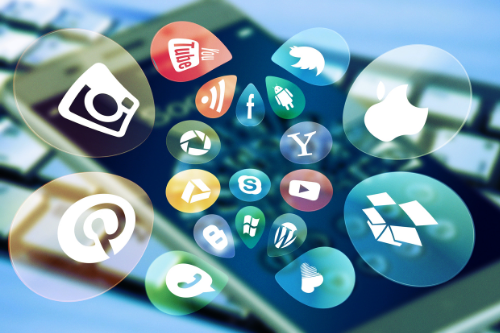
by Population Science | Nov 1, 2023 | Digital Marketing, Programmatic
If you do a search on the definition of programmatic you will get a lot of different answers. If you ask someone in the digital space what programmatic is, you will get an even wider range of answers.
While programmatic adoption continues to grow at a steady pace, one thing holding back adoption is the lack of education about what programmatic actually is.
So what is programmatic, really?
In short, programmatic is the process of buying digital media in an automated fashion. For finance buffs, think of it as similar to the Bloomberg Terminal which allows traders to buy securities around the globe in real-time, except programmatic allows us to buy media.
Programmatic uses technology to improve marketing decisions across a broad ecosystem of channels, tactics, and data sets. This allows marketers to place the right ad, in front of the right person, on the right device, at the right time, maximizing efficiency and return on ad spend.
Another thing that holds back programmatic adoption is the confusion around the complexity of the offering. Prior to programmatic, digital marketing and buying were pretty silo’d. You would go to:
-
Mailchimp/Constant Contact/etc. for email
-
Facebook/Twitter/LinkedIn to buy social ads
-
Outbrain/Tablooa to buy native ads
-
Bing and Google to buy search and display
-
Google AdWords for a slightly more robust offering of display, native, and video.
With programmatic, media buying is streamlined across many platforms, giving more flexibility to manage budgets, evaluate effectiveness and pivot strategy seamlessly.
Programmatic also opens digital media buyers to new and exciting channels such as Connected TV, Digital Audio, Digital Out-of-Home, in addition to the traditional display, native, and digital video channels. With email deliverability and open rates declining, the limitations of AdWords and constantly changing algorithms and regulations on social platforms, programmatic offers the most efficient way to reach consumers outside of search and social. It’s imperative that marketers begin considering, exploring and adopting programmatic to stay on top and ahead of the evolving digital landscape.
Further, programmatic gives you the ability to active 1st, 2nd, and 3rd party data while managing frequency of ads across all of these channels to ensure you are being as efficient as possible with your media buy. Your data is one of the most valuable assets your business has, and if you’re not leveraging it to its fullest potential through programmatic, you’re missing a huge opportunity to reach new prospects and existing customers. Check out a related article that talks about Demand Side Platforms and Supply Side Platforms which house programmatic marketing: https://populationscience.com/demand-side-platforms-and-supply-side-platforms-for-dummies/
If you are ready to learn more about programmatic and explore adding it to your strategy, contact us today. We’d love to chat about your business and put together a plan for testing and implementing programmatic in a way that works for your budget and your goals.

by Population Science | Oct 30, 2023 | Programmatic
Over the past five years I have had a lot of conversations with people about programmatic. I’m often surprised to learn that even many seasoned marketers have dismissed programmatic due to real or perceived obstacles. The reasoning for ignoring this incredibly effective opportunity generally fall into one of three buckets:
1. WE DON’T DO DISPLAY ADS.
There is a common misconception about programmatic just being a new way to buy display ads. The reality? Programmatic is so much more than display.
Programmatic does give you access to display ads on desktop and mobile devices. However, it also gives you access to native, video, and emerging formats such as connected TV, digital audio, and digital out of home. By accessing these diverse channels, programmatic gives you access to virtually every internet connected consumer in the United States to run data-driven digital campaigns to.
2. WE ARE OKAY WITH OUR CURRENT MARKETING MIX.
Marketers that buy directly from platforms such as Google AdWords or Facebook Business Manager and run retention programs via email are missing out on a big opportunity. Email, Facebook, and Google are fantastic platforms, but also limiting in their own ways. For example:
-
Meta is a great way to reach a large audience with robust targeting data. However, Facebook only reaches about 65% of the connected audience in the United States. People spend 70%+ of their connected time outside of social media. Programmatic is the most efficient way to reach people when they are not on social media as well as reaching those who aren’t on social media period.
-
Google AdWords provides access to its search engine, YouTube video, and Gmail native ads. You also get access to a wider display, native, and video network. While this seems robust, it pales in comparison to what programmatic offers. Emerging formats such as connected TV, digital out of home, and digital audio aren’t offered in AdWords. Further, programmatic provides full control over placements, access to a massive 3rd party data marketplace, and omni-channel controls that maximize efficiency across all of the available channels.
-
Email is a fantastic tool and it is something that should be a part of every marketing mix. That said, deliverability continues to get harder and open rates for most marketers continues to slide. In short, it’s getting harder to get a share of voice within consumer inboxes. Email alone isn’t enough to run successful retention or acquisition campaigns.
While email, Google, and Facebook are great ways for small businesses to do digital on a budget, it’s not nearly robust enough for serious digital marketers.
3. WE WOULD LOVE TO TRY PROGRAMMATIC, BUT WE DON’T HAVE THE RESOURCES (BOTH HUMAN AND FINANCIAL) TO RUN IT.
Yes, programmatic can be expensive. Most DSPs (Demand Side Platforms) require minimum spend commitments well into the six figures per year. If you require their assistance to setup and manage your campaigns (which most companies will because programmatic is very complex), 50% or more of your spend could be going to fees. That is a difficult pill to swallow.
If you are an agency or a brand that would love to get into programmatic, but do not have the internal resources or budget to do so, Population Science can help. We specialize in helping small to medium-sized organizations get into programmatic with personalized strategies, flexible minimums and a commitment to making programmatic accessible.
WHERE DO I START?
With all of the tactics and channels available in the programmatic space, you can run up a very large media bill pretty easily. For those of you looking to dip your toe in the water, here are a few places I suggest getting started:
-
Retargeting: Everyone retargets. Most people use Google Display Network, AdRoll, or Criteo for this. These are great platforms, but they are very limited in leveraging your retargeting data for prospecting campaigns (at least in a transparent way). Programmatic has all of the retargeting capabilities of these platforms plus much more.
-
Prospecting: Take the learnings from your website visitors, even with a smaller data set, and reapply that to an omni-channel prospecting campaign. We can model people that convert on your site with other browsers to find people who are currently in-market for your product or service. We can even leverage 3rd party data sources to further hone in on your target audience.
-
Connected TV: Connected TV is a channel that every marketer should be in on. It combines the impact of TV advertising with the targeting and tracking capabilities of digital ads. More than 80% of internet users currently stream at least some of their video content and this number is rapidly growing.
Ready to explore programmatic for your 2024 marketing? We’re here to help.
Whether you’re an agency with clients who could benefit from programmatic strategy or a business looking to reach new prospects and reengage customers in exciting ways, we’d love to chat about your needs and put together a plan for success.
Contact us today and let’s talk!

by Population Science | Oct 27, 2023 | Digital Marketing
Email is powerful marketing tool. Email marketing allows you to keep your audience in the know about new products, announcements, and other important information. It also presents an opportunity to target and connect with leads, turning them into loyal customers. Delve into these stats to improve your email marketing strategy today!
We started our 10 Stats to Consider When Crafting Your Digital Strategy with our Social Media edition. To keep you going on executing a top-notch digital strategy, here are 10 email marketing stats digital you need to know.
1. There will be 4.4 billion email users by 2023
(Nearly) everyone uses email. A strong email marketing allows you to reach billions of people across the world at any time of day.
2. 99% of email users check their inbox every day, with some checking 20 times a day. Of those people, 58% of consumers check their email first thing in the morning. (OptinMonster, 2020)
Your customers are frequently using email, so you should too. Email is so embedded into everyone’s daily routine that ensuring your emails are consistent and high quality is crucial to standing out.
3. Nearly 1 in 5 email campaigns are not optimized for mobile devices.
It is essential to optimize your emails for both mobile and web view to ensure your emails are being opened and customers have a seamless experience that inspires them to act.
4. 74% of Baby Boomers think email is the most personal channel to receive communications from brands, followed by 72% of Gen X, 64% of Millennials, and 60% of Gen Z. (Bluecore, 2021)
Email marketing allows you to connect with you audience on a more personal level than other marketing strategies. Prioritize making your emails feel like a one-to-one experience for your customers.
5. 89% of marketers use email as the primary channel for generating leads.
If lead generation is an essential goal for your business, a strong email marketing strategy is the way to go. Personal, targeted emails help inspire meaningful connections that turn leads into loyal, long-lasting customers.
6. Email marketing ROI is 4200%($42 for every $1 spent).
A well-executed email marketing strategy can make you money. Investing in quality and engaging content is a cost-effective way to drive revenue.
7. 37% of respondents name email as the most effective channel for customer loyalty and retention, while websites were named by 13% and social media by only 11%.
Your website and social media are important, but ultimately getting customers to sign up for your email is key to building relationships and gaining support.
8. Email marketing is mostly used for lead generation (85%), sales (84%), lead nurturing (78%), and customer retention (74%).
Email marketing is beneficial no matter what business you have. You can increase sales, improve brand loyalty, and deliver important information that result in stronger customer relationships and increased conversions.
9. The best days for emails are Tuesday and Thursday. The worst open and click-through rates are on weekends.
Understanding trends of what days and times email performs best is key to ensuring you are setting up your strategy for success. Dive even deeper into this data to determine when emails for your specific business perform best.
10. Nine out of ten marketers say they look at email metrics such as open rates, click rates, and downloads to determine how successful a piece of content is, more so than website traffic and social media analytics.
Email marketing provides a lot of value. Looking at your metrics can help you determine what tactics are working, and what areas need to be strengthened. These are valuable insights you can use to strengthen your strategy and business.
Email is a tried-and-true strategy. These 10 email stats can help you better understand the benefits of a strong email marketing strategy and how it can help take your business to the next level.
Looking to scale up your business’s marketing efforts? Check out this article: https://populationscience.com/connecting-the-digital-dots-scaling-your-digital-marketing/

by Population Science | Feb 22, 2023 | Digital Marketing
If you feel like you are tired of politics, I have bad news… it’s about to be all you see and hear about on commercials and digital ads through November. According to every prediction I have seen, political ad spend will roar higher this cycle and you’ll have the hindrance of political ad bans across multiple prominent platforms.
For marketers, this presents a unique challenge as we compete for impressions across digital and traditional ad platforms. The increased spend from political advertisers will drive rates higher, eating into your return on ad spend for a large portion of 2023.
One major opportunity for brands in 2023 is testing or increasing your presence on platforms that have banned political ads altogether. Spotify recently joined Twitter in banning political ads ahead of the 2023 election cycle. Google has updated their political advertising policy to not allow microtargeting for political ads. This will likely push prices for media on Google up this year, especially in highly contested states and congressional districts. If Google is a major part of your paid media strategy, it could be even more critical to find other opportunities to reach your target audience.
Twitter may not have the reach of Facebook or Instagram, but more than 1 in 5 American adults use the service. In addition, they have made significant investments in improving their mobile and direct response ad units.
Spotify inventory may not be the traditional clickable and trackable inventory digital marketers are used to, but their audio ads are highly impactful for driving audiences into the top of your funnel. In the past year, Spotify has moved beyond music to become a player in the booming podcasting space. Both Twitter and Spotify have robust user data segments that allow advertisers to place highly targeted ads.
If you have not tried Twitter (X) or Spotify, 2023 is the perfect time to explore these platforms — especially if your audiences reside in battleground states!

by Population Science | Feb 7, 2022 | Digital Marketing
Social media allows organizations to tell their story and connect with their audience. With a strong social media strategy and the ability to create engaging content, you can engage supporters and increase brand awareness, leading to overall success.
Social media is a vital component of overall marketing efforts. But where do you start? Understanding current and relevant social media statistics can help shape your social strategy and define and set goals. Here are 10 social media stats to consider when crafting a strong social media strategy.
1) 57.6% of the world’s population uses social media. The average daily usage is 2 hours and 27 minutes (October 2021).
Meet your audience where they are already spending their time- on social media. With the majority of the world spending time online every single day, implementing a social strategy with a strong foundation presents a huge opportunity to reach a variety of supporters.
2) 84 percent of US adults aged from 18 to 29 are active social media users (Pew Research Center, 2021).
This number falls slightly to 81 percent for the 30- to 49-year-old age group and further to 73 percent for those aged from 50 to 64. US adults who are 65 years old and above use social media the least.
Understanding your target demographic and which platforms they use most will allow you to deliver the most effective strategy. The best way to find your target audience is by first thinking about the specific needs your organization fulfills. Start by defining your audiences’ questions, concerns, and problems and build your strategy from there.
Facebook continues to be a social media leader. No matter your industry, you should be able to find your desired audience on Facebook. From ad formats, targeting options, and measurement capabilities, Facebook is a great place to start with any marketing strategy.
4) When asked what type of content they like to engage with, 68% of consumers preferred images, 50% preferred videos and 30% enjoyed text-based posts.
Your strategy should include a mix of text, image and video to keep your content interesting and your audience engaged. Experiment with what form of content performs best on your page and use that information to decipher what your audience wants to see.
5) 85% of marketers rate short-form videos as the most effective type of social media content.
Video marketing should be a critical aspect in your social media efforts. Video marketing allows you to share a great deal of information with your audience in a quick and captivating manner.
Your social media should reflect your brands voice. Your social media should cover your organizations basics, be engaging and informational, and inspire your audience to act.
First impressions matter. Your social media will often be the first impression a prospect has of you. When consumers have a positive experience with you it builds trust leading to brand loyalty and affinity and generates sales.
8) In a 2021 HubSpot Blog poll of 1,000+ global marketing professionals, 79% of marketers report buying paid advertising on social media. (HubSpot)
Paid advertising presents an opportunity for reach that isn’t always able to be accomplished organically. Social media advertisement allows you to find, target, and reach your desired audience that can fit any budget you have.
9) 83% of marketers believe the quality of social media posts is more important than the quantity. (HubSpot)
Quality and consistency are key to social media success. The more often you can share quality content, the better. Start by researching the specific social platforms you use and determine the amount of content that performs best for each platform.
With most social media users using mobile devices, accessibility is key. It is crucial your social media content and layout are optimized for mobile.
Social media marketing presents a huge opportunity to reach and engage your audience. Use these 10 social media stats to help shape your social media strategy by gaining better insights into the world of social media, and how to maximize your results using these resources.






